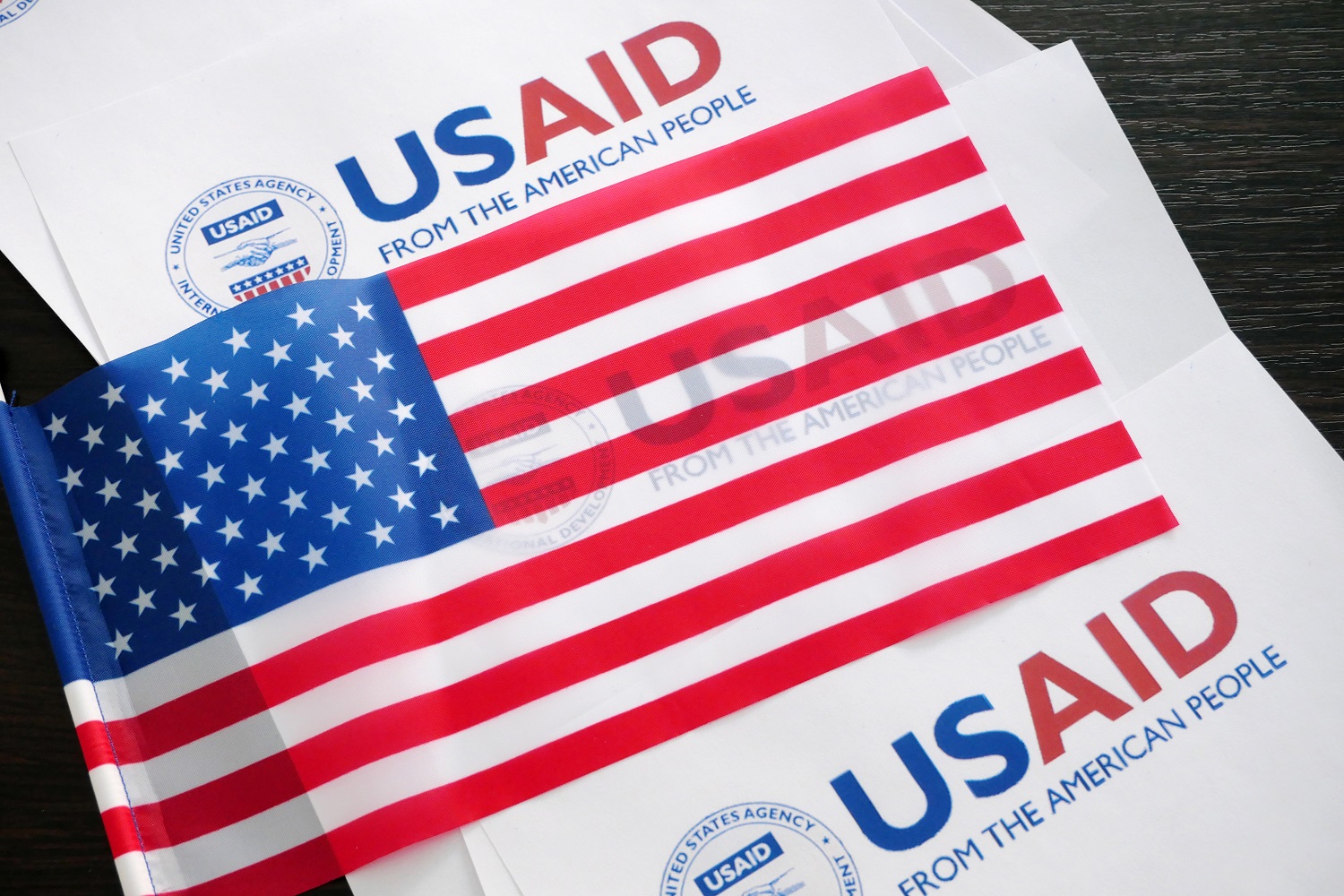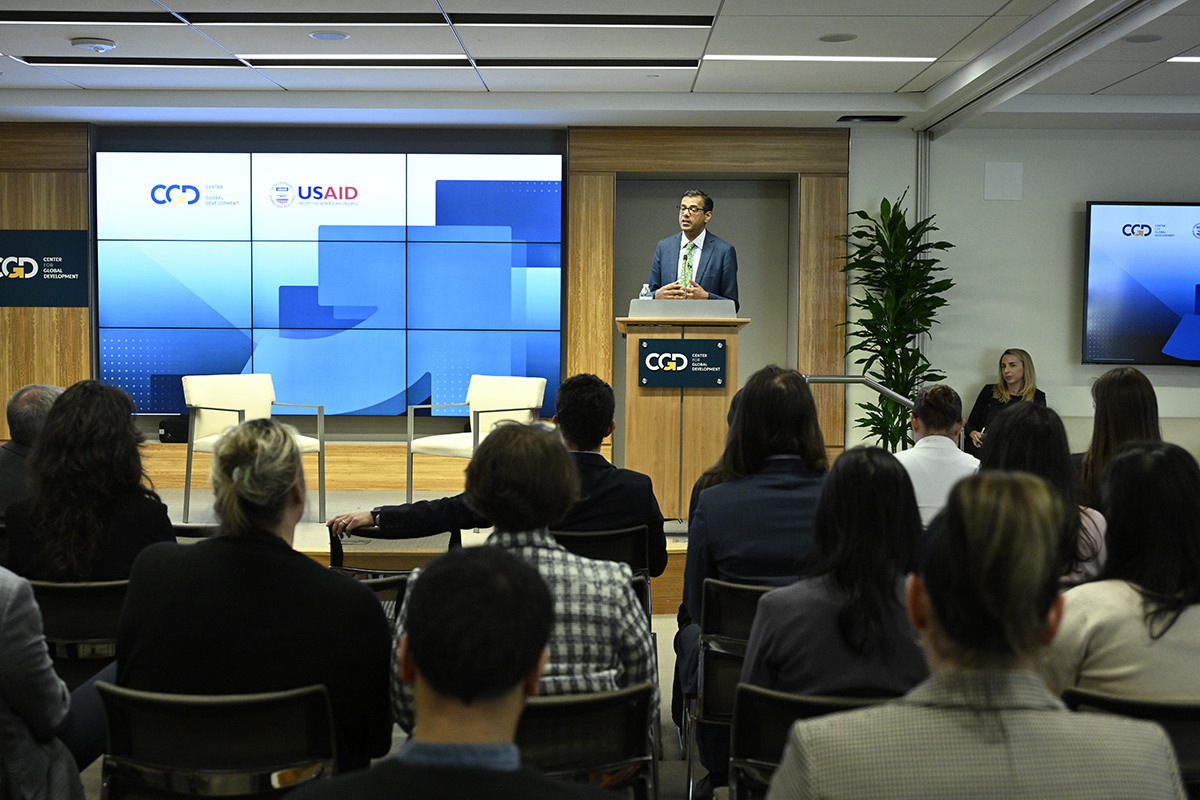Recommended

Event
USAID administrator Samantha Power’s aim to advance localization—with at least a quarter of funds going directly to local partners—has been widely lauded. A recent USAID report on localization indicates progress towards this goal, but major operational and contractual directions about how to implement localization remain. New USAID government-to-government (G2G) pilots may help to deliver on the 2005 Paris aid effectiveness principle of country ownership and to make progress toward the agency’s localization goals. To strengthen this effort, the G2G agreements need simple contractible indicators that are independently verified and use third-party evaluation in order to learn how to go local better. As USAID learns from these G2G pilots, PEPFAR should also watch and learn closely.
We need simple contractible indicators that are independently verified
The US government joined other donors in committing to the 2005 Paris principles of aid effectiveness (remember those?), of which country ownership, alignment, and development results were the development buzzwords in the 2000s. While the Paris principles have received far less attention in recent years, localization efforts could play a key role in revitalizing donors’ commitment to effective foreign aid.
While quantitative targets are important to track localization progress, understanding the how of localization is as important, particularly when determining how to proceed if efforts are falling short. Localization can come in many different forms, of which G2G pilots are one important form.
When it comes to the how of G2G agreements, two of the more common federal contracting tools used by USAID are cost-reimbursement agreements and fixed amount reimbursement awards (FARA). To put it crudely, cost reimbursement is about tracking receipts, whereas FARAs emphasize and disburse based on outputs.
CGD has written quite a bit about performance or results-based payment (see here, here, here, here, here, here, and here, for example), with three key messages:
- Donors need a simple, minimum set of contractible indicators on which payment can be made.
- The contractible indicators should be independently verified or evaluated by a third-party organization without a conflict of interest by the principal (i.e., the donor) or the agent (i.e., the recipient).
- Sharing the terms of the contract can enable learning on how to shift to results-based financing.
Mixed payment contracts can hedge the risk in leaning towards results
The full switch from cost reimbursement to FARA is risky. But mixed payments are a way to hedge the risk of each payment type by having another payment type present. A classic Ellis and McGuire paper argued in favor of mixed payment systems, albeit from the perspective of the payer to provider relationship. We’d argue that the donor-country relationship is not that different from a payer-provider relationship.
At this point some may shudder at the thought that donors and countries have a principal-agent relationship with incentives, and that such a relationship might impinge on country ownership. On the contrary, we would argue that leaning towards results is less paternalistic, more trusting—and even less colonial—than leaning towards receipts (as implicitly argued in my old slightly whimsical take).
Use evaluation to learn how to go local better
Third-party evaluation is needed not only to independently verify the contractible indicators for contracts themselves, but also for the learning of how things get done.
Paying for results doesn’t mean you discount the value of paying for receipts—or, more importantly, the value of building up financial management and accounting systems that underpin such receipts. Past work by my colleague Sanjeev Gupta has pointed to the importance of public financial management in stewardship of health spending. (Even in the United States, there is tremendous variation in state performance in spending down federal grants due to underlying differences in capacity, to the point where some federal programs allow state governments to assign third-party financial management organizations to help run and implement federal funds! But I digress…)
The point is that strengthening capabilities in running programs may have spillover effects in other disease areas and sectors, enabling a government to get things done and deliver critical services to its population. These new G2G pilots tackle the nitty-gritty of getting stuff done (see the USAID Senegal G2G malaria case, for example) and drive country and local ownership.
Moving forward, USAID should also consider how to institutionalize innovation and experimentation, including in its payment systems and contracting mechanisms, and regularly integrate learning from evaluations in how USAID does business.
PEPFAR should consider G2G agreements to advance localization
With evaluation of these promising G2G initiatives in USAID, there are also lessons to be learned for other initiatives in global health. Arguably, the elephant in the room is that of PEPFAR. In a 2013 piece on PEPFAR’s contractors (before the days of foreignassistance.gov), we found some notable statistics about the distribution of PEPFAR monies:
“Table 1 presents the 25 largest implementing partners in terms of FY2008 funding, which includes three US agencies. The top 25 recipients accounted for $2.05 billion in approved funding. Put differently, the largest 5% of recipients accounted for 58% of the total funding for all recipients. Among the top 25 recipients, all but three (shaded in red) are based in the US, and all but one of the US organizations are based on the east coast. Six of the top 25 recipients are major American universities. Further down the list is a broad range of recipient organizations, including an array of local organizations, recipient government ministries, faith-based organizations, and for-profit consulting companies. Among the lowest 25 recipients (not shown), nearly all were local partners.”
Since then, PEPFAR may have become more localized. A 2022 PEPFAR report indicated a localization share of 55 percent across all PEPFAR agencies (see p. 88), although with some variation between USAID and CDC. (We look forward to one day being able to reproduce these numbers using foreignassistance.gov—we’re still optimistic!)
More importantly, we need to understand the how of localization—what contracting tools and what contractible indicators can be used for PEPFAR projects. How is PEPFAR conceptualizing and envisioning G2G agreements as part of a broader multi-agency move towards localization? Ambassador Nkengasong hinted in his talk at the Center for Global Development that G2G is in the cards.
Concluding thoughts
Understandably, some are wary of G2G, citing risks both in terms of delivering results as well as fraud, waste, and abuse. But consider two points. First, G2G is not a new idea; lots of other donors, both bilateral and multilateral, have accepted a level of risk for going direct to governments. Second, we need to remember the overarching purpose of G2G agreements, which is to advance localization. The goal of localization arguably also has under its umbrella the objectives of country ownership and sustainable government financing.
At a time when US resources for global health seem stingier than ever, calls to have country governments take on more responsibility for health spending will ring empty if US government does not engage directly with those governments. Going local and G2G will require the US government to tackle institutional and political constituencies entrenched in the delivery of services through (often US-based) contractors (which admittedly is good for US jobs and the US economy). In short, G2G has the potential to change the way the US government has done foreign assistance. I’m not saying G2G is the greatest thing since sliced bread, but with good indicators, mixed payment methods, and evaluation baked into these G2G agreements, I’m optimistic.
The authors thank Erin Collinson, Amanda Glassman, and others for helpful comments.
Disclaimer
CGD blog posts reflect the views of the authors, drawing on prior research and experience in their areas of expertise. CGD is a nonpartisan, independent organization and does not take institutional positions.






